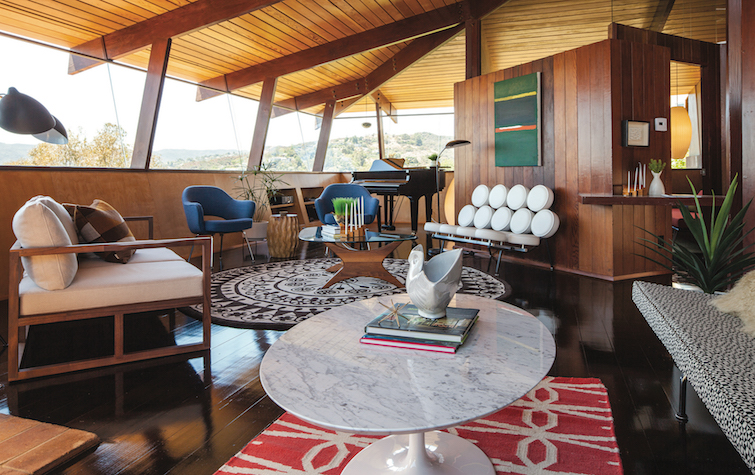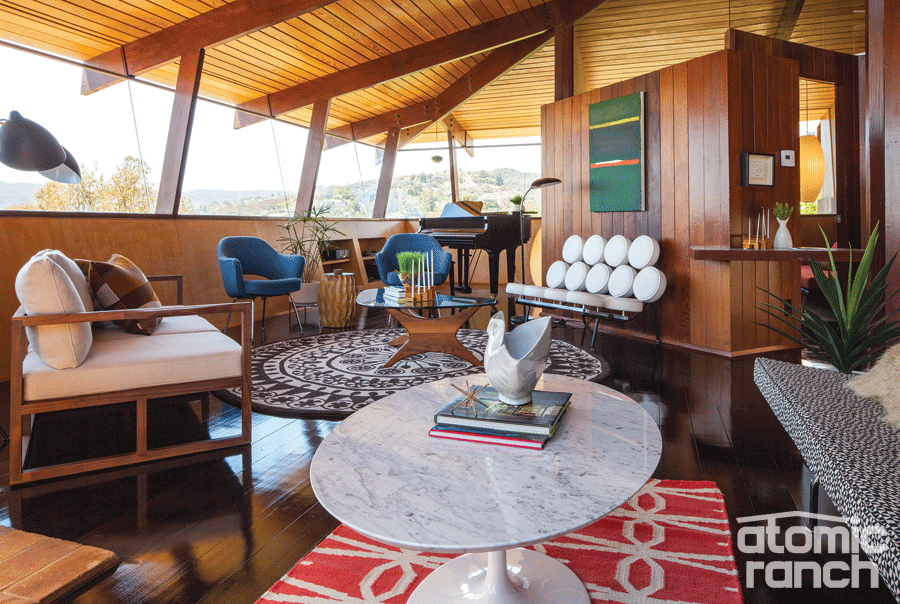
With Alex and Kristin’s 1951 A. Quincy Jones home renovation underway (part 1, part 2), it was time to bring in another pro, this time to create the proper living room floorplan. The problem was finding the right one.
“The house is a weird plan and was designed before television,” Alex explains. “We could not figure out the living room floorplan to save our lives. We interviewed a half dozen designers, and they’d come in and give us their cockamamie ideas, and we’d say, No, no, no.
Sarah came in and said like two words, and we said, ‘You’re hired!’”
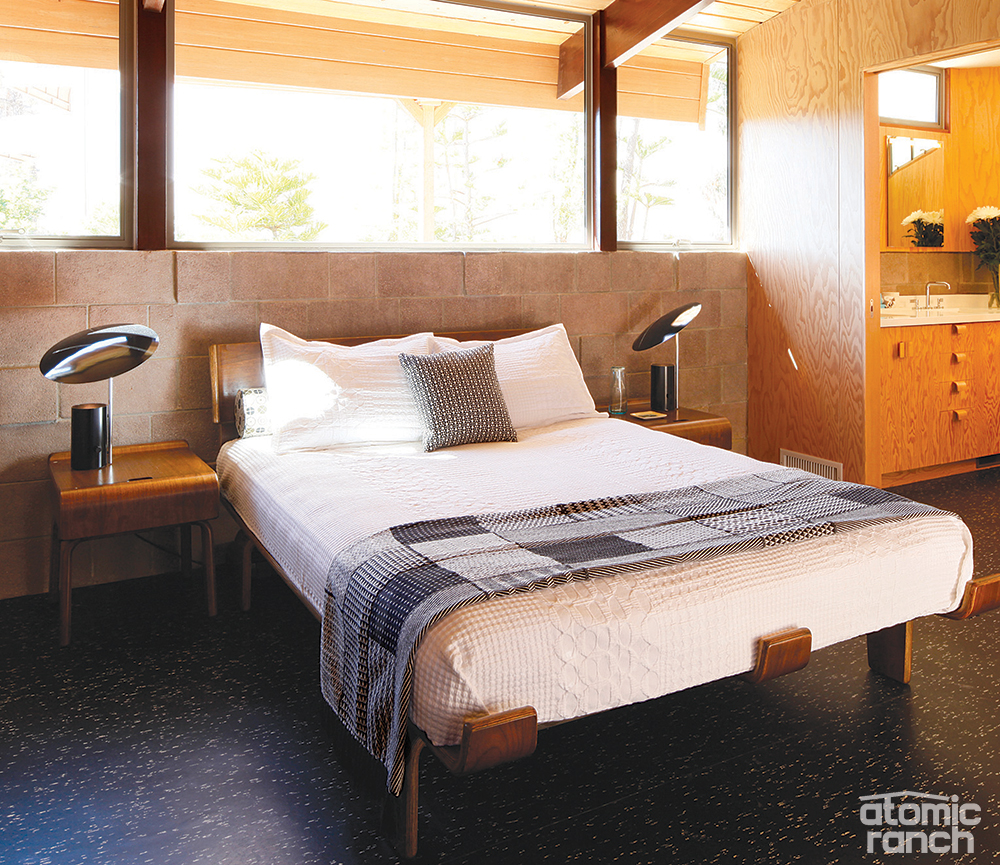
Sarah Farris-Gilbert, who specializes in vintage residences, designed the guest house interior and helped bring cohesion to the challenging living room space. “The design concept involved creating two distinct conversation spaces, plus the piano nook. That is essential when working with an irregular space—otherwise you end up with one disconnected, awkward grouping,” she says.
“I showed Kristin and Alex how this could be achieved by reconfiguring existing purchases and adding in a few pieces that pulled the floor plan together. The contemporary Organic Modernism sofa has a visually lightweight base in keeping with the other furniture, but the boxiness helped balance the curvaceous midcentury pieces. The loose pillows also helped balance out the more structured furniture it’s paired with.
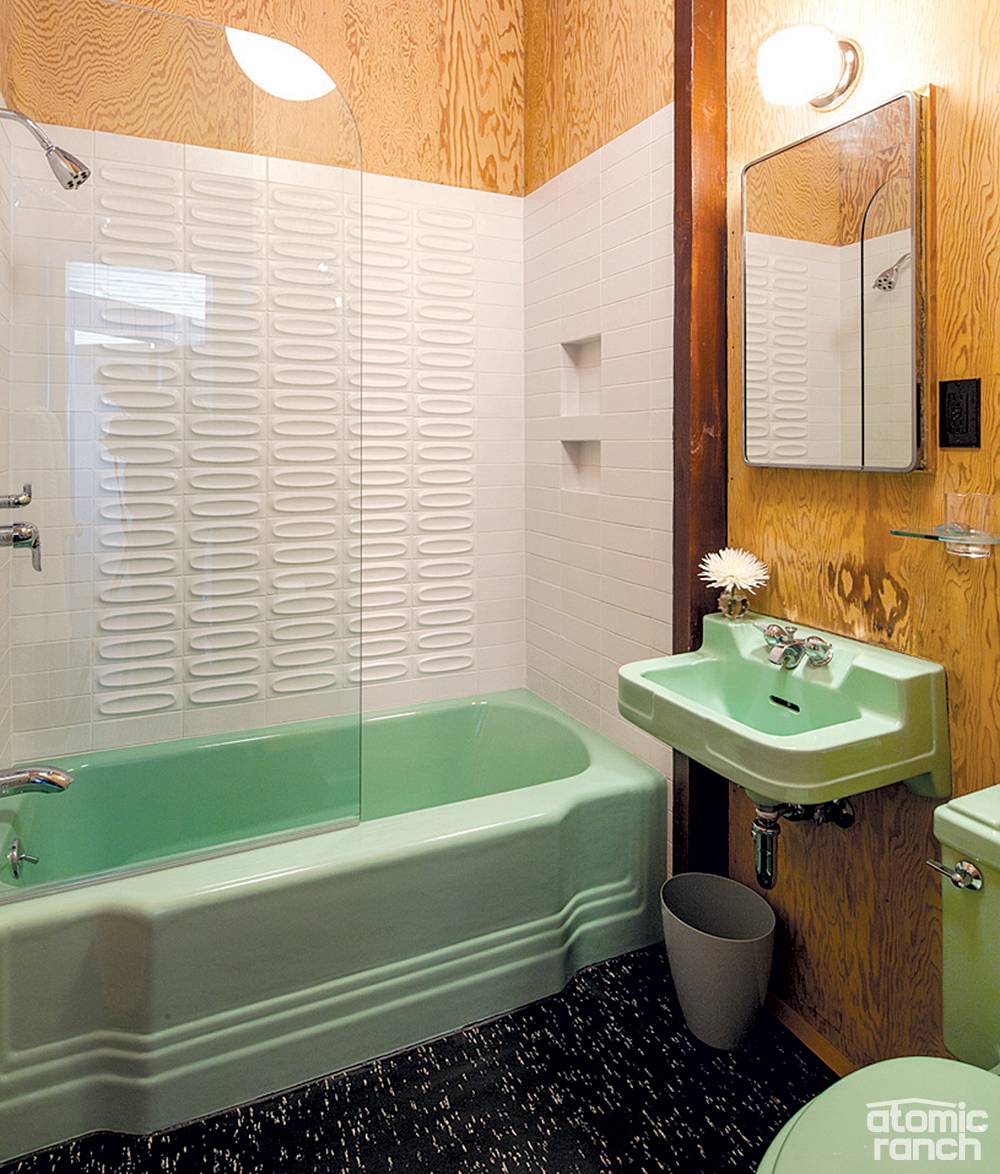
“Thankfully they didn’t request a television in the room. If a decision between art and television has to be made, go with the art: You’ll be inspired more by it than by a big, black screen. With technology becoming increasingly mobile, I think we’ll see a back-to-the-future concept in how American households integrate televisions into living spaces. It will no longer be so front and center, which will really allow for much better planning in glassy midcentury spaces where you don’t want to call attention to electronics.
“In working with historic houses, clients who respect the architecture and vintage features of the home make the creative process so much smoother,” Farris-Gilbert continues. “I can focus on highlighting the beauty of the original materials and unique elements, instead of trying to talk a client out of altering just for the sake of creating something new. It is great to collaborate and have a melding of concepts—and be sure your designer is hearing you out—but in the end, listen to the expertise of the person you’ve hired.
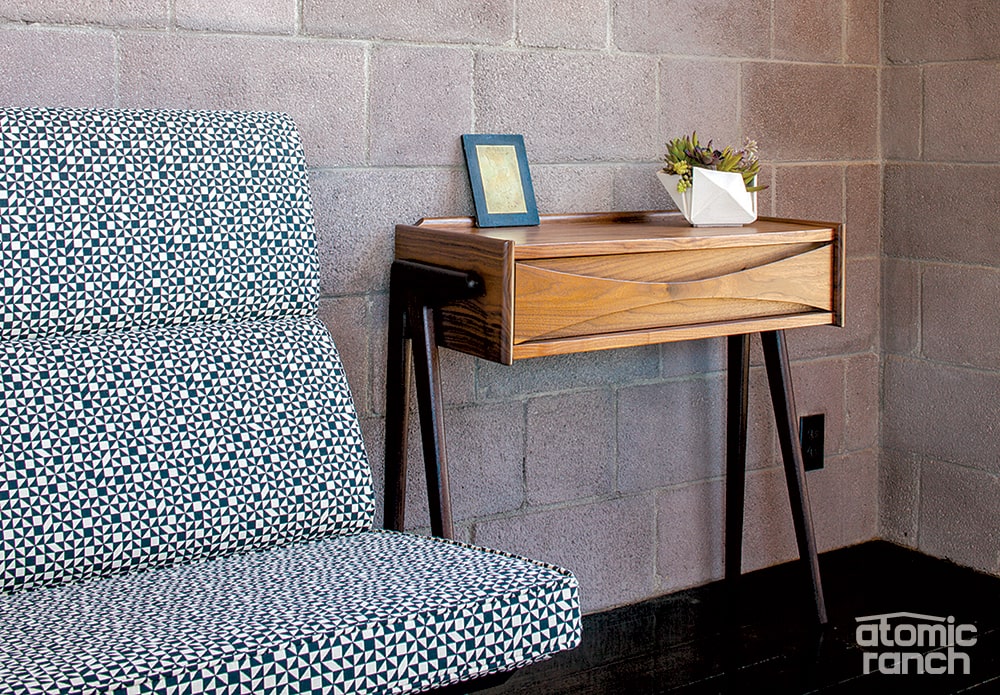
“Kristin and Alex have really made their home personal, but they understand they are temporary caretakers, and they want to see the home thrive for generations to come. The end results are always better when you have clients who trust your advice.”
Go team!

